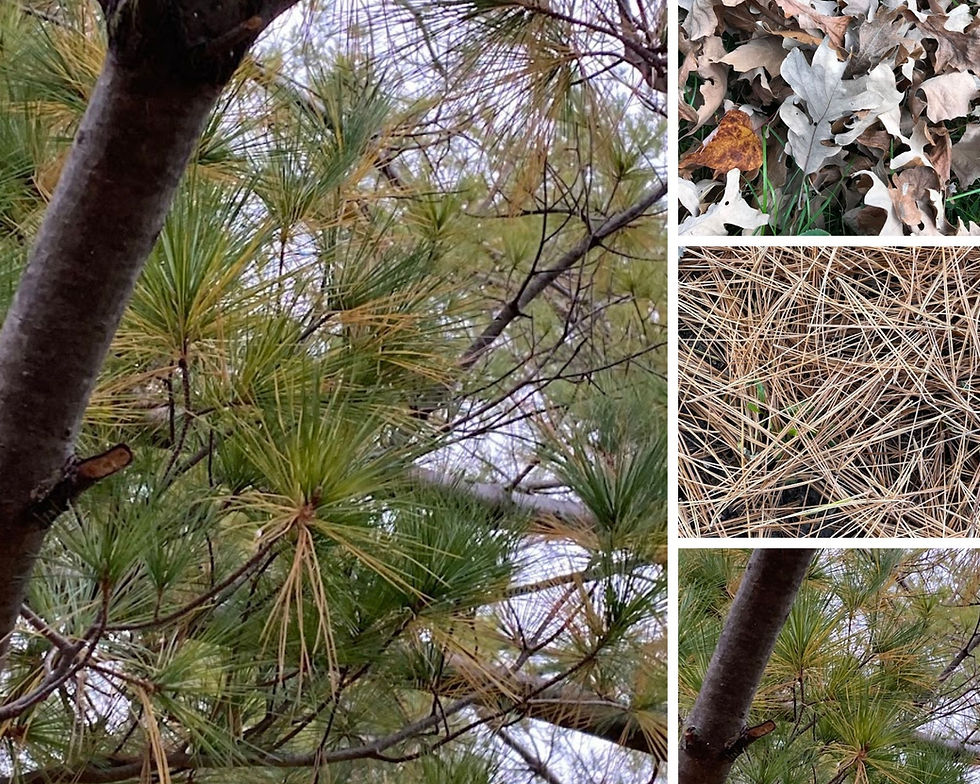Yard Waste or Garden Gold?
- Jenny Hill
- Oct 29, 2021
- 3 min read
In the fall, once the gardens are put to bed, many of us feel the urge to “clean up” our yards. We tend to label fallen leaves, pine needles, and other debris from trees as yard “waste.” We reach for the leaf blowers and rakes. But what are some other options?
Regular readers of our blog know we advocate using leaves in your yard as mulch rather than bagging or burning them. One of the best explanations is from Xerces.org, the website of The Xerces Society for Invertebrate Conservation. They bust the myth that leaves in perennial beds create too thick a mat. “In reality, a thick layer of leaves provides additional insulation against bitter cold weather, and can protect newly planted perennials when frost-heave may expose tender roots. Anyone who has spotted fragile spring ephemerals popping up in the woods knows that all but the frailest of plants will burst through the leaf litter in spring without trouble.” Their full blog post outlines all the ways leaves benefit pollinators.
Pine needles

What about pine needles? First of all, know that it’s normal for evergreens in Minnesota to lose needles in the fall. Needles one- to two-years-old closest to the tree’s trunk turn yellow/brown and drop. Normal needles will not have any spots or other markings. This handout from the University of Wisconsin Extension Service lists trouble signs if you are concerned about evergreen needle drop.
Pine needles have a reputation for being acidic. Does that mean they should only be used as mulch for certain plants? The answer may depend on the scale of your mulching. For agricultural large-scale use, it would take “massive amounts” of pine needles to affect the pH of the soil, according to the University of Minnesota Extension Service.

For the average home garden, the Extension Service does recommend pine needles as mulch for hostas and blueberries. For hostas, shredded leaves or pine needles are recommended, applied after the ground has frozen about three inches. For blueberries, a few inches of pine needles help maintain soil acidity. Oak leaves can also be used. If increasing soil acidity is your goal, work the needles into the soil rather than using them as mulch.
So if the pine needles are handy but you’re still concerned about them being too acidic, This Old House offers the suggestion of adding a layer of compost before the pine needle mulch. Because they are light, pine needles are easy to apply, but also easily get displaced on a windy day. And they may need to be applied more heavily than other mulches for adequate coverage.
No need to remove the pine needles in the spring--leaving your mulch in place and letting it break down adds organic matter to the soil. “This will increase the water-holding capacity of the soil and feed the microbial communities that make nutrients available to the plants,” says HDT’s own Gardener Dave.
Still got waste?
If none of the uses listed so far works for your fall yard waste, Dave also reminds us to consider composting. Treehugger.com has a great webpage on composting.
If the yard waste you’re cleaning up goes beyond just leaves and pine needles, consider this suggestion from the Minnesota Department of Natural Resources: build a wildlife habitat. Constructed correctly, a “brush pile” can serve as a place for red fox, woodchucks, weasels, skunks, and chipmunks as well as garter snakes, salamanders, and many types of birds. The DNR reminds us: Be sure to position the habitat at least 10 feet from your home so that it is not a fire hazard (woodpiles should be at least 30 feet from your house). Here are instructions for building a backyard wildlife habitat brush pile.
These are just a few ways of cleaning up your yard for the season. Do you have tips, tricks or a favorite practice? Please share in the comments.





Comments